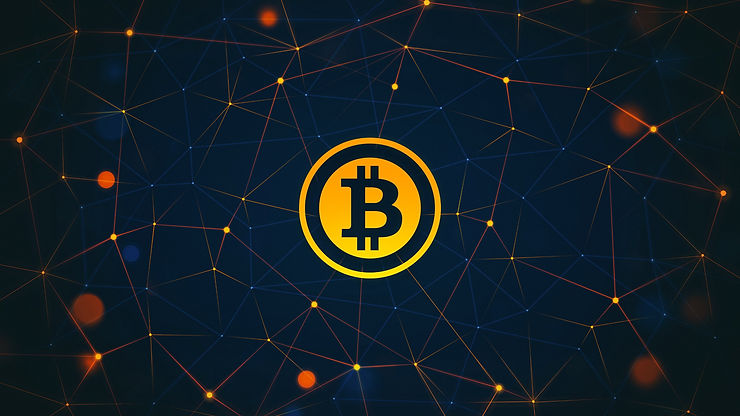
Brief History Of Bitcoin
(5 min read)
In 2008 An individual or group under the pseudonym Satoshi Nakamoto published the Bitcoin whitepaper, "Bitcoin: A Peer-to-Peer Electronic Cash System." This document introduced the concept of a decentralised cryptocurrency that didn't rely on a central authority.
I'm a paragraph. Click here to add your own text and edit me. It's easy.

On January 3, 2009 during the global financial crisis, the Bitcoin network came into existence when Satoshi mined the first block, known as the Genesis Block. If you look closely, you will find the famous message Satoshi engraved into the block. Times news paper "Chancellor on brink of the second bailout for banks" .
Bitcoin is born!


On January 12, 2009 the first bitcoin transaction occurred when Satoshi sent 10 BTC to Hal Finney, a cryptographer and early supporter. Halfin’s Tweet the day before the transaction.

In October 2009 the first bitcoin exchange rate was established, This pegged the value of 1,309 bitcoins to $1 USD.
In May 22, 2010 history was made when Laszlo Hanyecz bought two pizzas for 10,000 bitcoin, valued at about $41 USD at the time, now valued at over $519million. This day is now celebrated as "Bitcoin Pizza Day."

In February 2011 bitcoin equaled the US dollar, making 1 BTC = $1 USD.
Gains attention

On June 2011 the price of bitcoin surged to $31 before falling to around $2 by November.
Over 2012 and 2013 the use of bitcoin in transactions and its acceptance by different merchants continued to grow.
In June 2013, the US Drug Enforcement Administration seized 11.02 bitcoin from a man attempting to use them to buy illegal substances. This marked the first time a government agency had seized bitcoins. The FBI seized about 30,000 bitcoin in October 2013 from Silk Road, following the arrest of its founder Ross Ulbricht - who is due for a pardon once Trump is inaugurated in 2024.
The Silk Road

In April 2013 bitcoin's price finally crossed $100 USD.
In December 2013 bitcoins price reached around $1,150 US then fell sharply to around $760 USD because of concerns around regulation in China.
In February 2014 Mt. Gox, then the largest bitcoin exchange, filed for bankruptcy following a hack in which 850,000 BTC were lost. ( Do not leave your bitcoin on exchanges)
Surges & Setbacks

2015 to 2016 Bitcoin's ecosystem matured with improvements in security and the increasing involvement of established financial institutions. However, the bitcoin community faced a significant debate over bitcoin's scalability, leading to discussions about block size.
Recovery & Scaling Debates
In 2017 The price of bitcoin saw massive growth, peaking at nearly $20,000 USD in December in one of the first major bitcoin bull runs, drawing major attention across the globe.
Mainstream recognition & Forks


On August 1, 2017 disagreement over scaling known as the "bock size war" led to the creation of Bitcoin Cash through what is called a hard fork and some of the community split. Bitcoin continued to do its thing.
In 2018 bitcoin experienced a significant downturn, with bitcoin's price dropping below $4,000 by the end of the year.
Market Correction

In 2019 the market saw a recovery, with bitcoin's price stabilising and slowly starting to rise.
Gradual Recovery
In 2020 the COVID-19 plan-demic and resulting quantitative easing (money printing) led to rapid inflation that eroded the purchasing power of the dollar.
This set a beautiful stage to showcase Bitcoins utility as a store of value. The year saw significant institutional investment in bitcoin. One notable investor is Michael Saylor the CEO of MicroStrategy.
On Aug 11, 2020, when he announced that the business intelligence firm was going to make a long term investment of $250 million into Bitcoin.
He described bitcoin as a “dependable store of value and an attractive investment asset with more long term appreciation potential than holding cash.
Pandemic & Institutional Interest


As of Dec. 22, 2024, MicroStrategy holds an astounding 444,262 BTC, acquired for approximately $27.7 billion at an average price of $62,257 per Bitcoin.
In 2021 bitcoin reached new all time highs, Surpassing $60,000. Major companies like Tesla announced significant investments into bitcoin and the country of El Salvador became the first in the world to adopt it as legal tender.
New Heights & Mainstream Adoption

2022 to 2023 the market faced challenges, with increased regulatory scrutiny around the world. Despite these challenges, bitcoin continued to be integrated into the global financial world.
In 2024, the approval of bitcoin spot ETFs by multiple investment companies in the United States has marked an enormous moment in bitcoins life. It represents a significant step in the assimilation of bitcoin into the TradFi system.
Regulation & Intergration
ETFs (Exchange Traded Funds)
WARNING!
Do not buy the ETF as you will not hold your bitcoin

Just like if you buy gold on the stockmarket you don't physically hold that gold in your home. Instead you hold the 'promise' or 'idea' of gold. Sure, holding assets on the stockmarket means they're more liquifiable (i.e. you can sell them at a click of a button rather than having to take the time and effort to find and meet someone who wants to physically buy your gold bars) but you're essentially putting your wealth into someone elses hands to safeguard, with no evidence or guarantee that you can collect your gold/bitcoin at anytime.
The history of Bitcoin up to 2024 is a remarkable journey of innovation, challenges, and increasing acceptance. From its inception as an experimental digital currency in 2009 to its recognition and integration into the mainstream financial system with the approval of bitcoin spot ETF's, bitcoin has continually evolved and influenced the TradFi world. Its ability to persist, adapt, and grow amidst varying conditions, regulatory challenges, and technological advancements speaks to its resilience and potential as a transformative money.
In Conclusion


